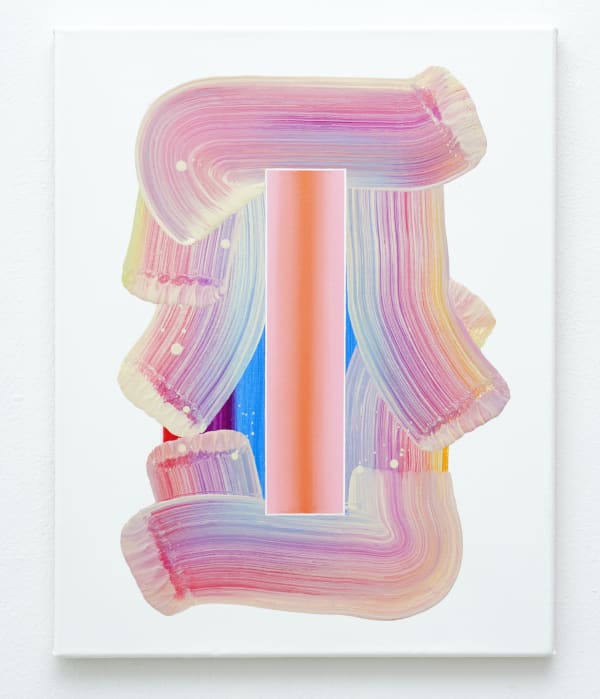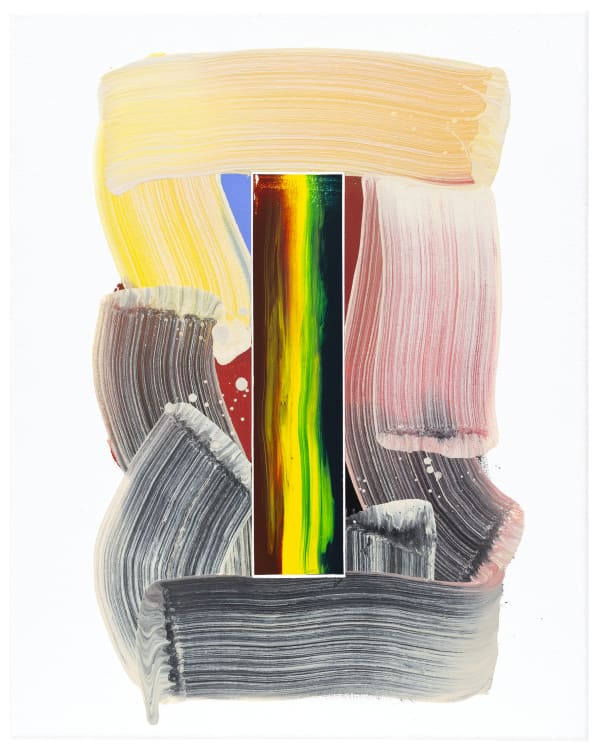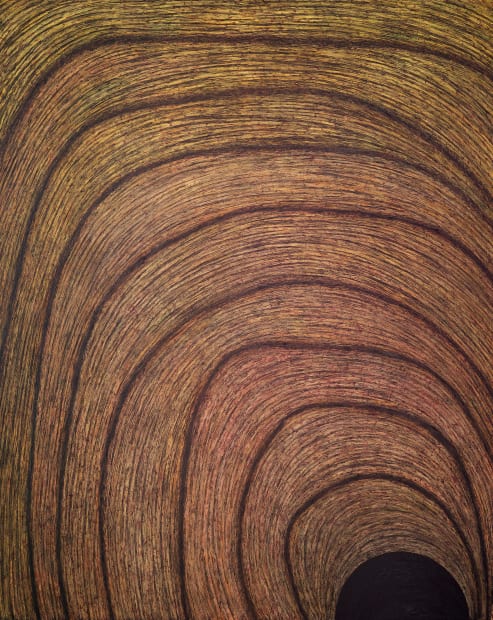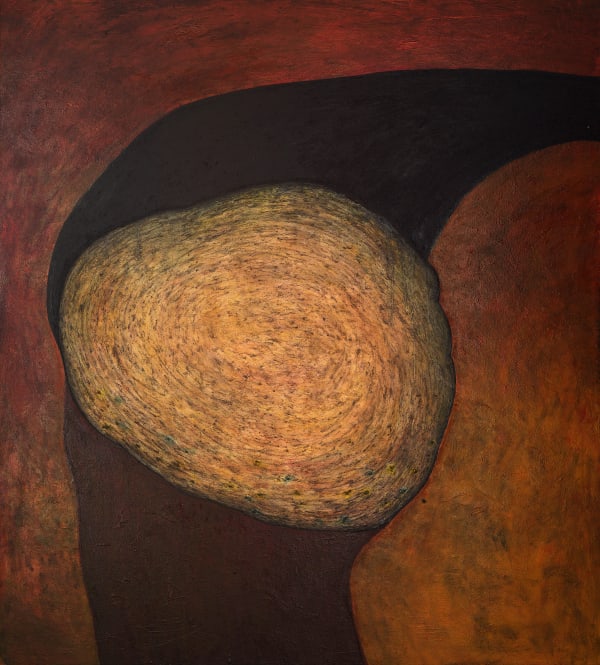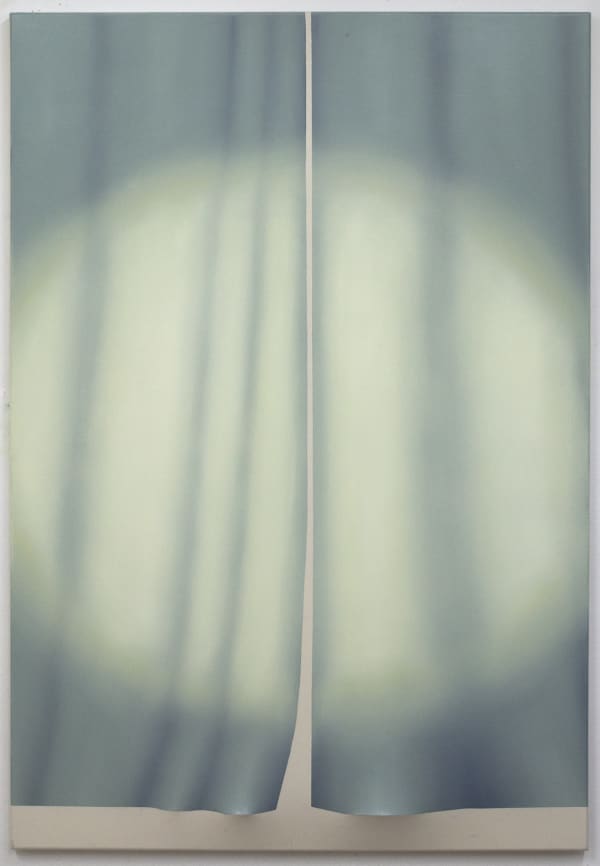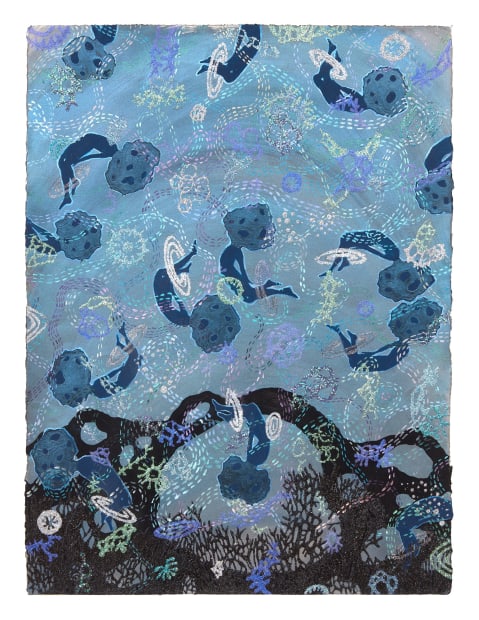-
WABI-SABI
Cigdem Aky, Jack Bidewell, Gabriela Giroletti, Emilia Kina, Adeline de Monseignat, Natascha Schmitten, Alisa Sikelianos-Carter, Panos Tsagaris, Adia Wahid -

-
-
Munich-based artist Cigdem Aky refers to her practice as a form of ‘painterly research’ in which she applies layers of paint on the canvas and responds to the interactions of colour. While the colour palettes vary, each work employs the same constructed shape: a clear, geometric element in the centre, surrounded by wide, gestural brushstrokes. This balance between spontaneity and control allows both the artist and viewer to more carefully consider the emotional experience of colour and form. In a similar way, Natascha Schmitten plays with fluid gestures of paint to evoke captivating moments of dynamic harmony or turbulence. For this exhibition, she presents two works entitled Poise I and II (referring to the unit of viscosity, the movements of liquids) in which the brushstrokes appear to flow and collide into one another. The paint is applied to a translucent nylon, allowing the viewer to see through to the wall behind and creating an impression of lightness and ephemerality.
New York-based artist Alisa Sikelianos-Carter presents two paintings which respond ‘to the global climate of anti-Blackness and the simultaneous fetishisation of Black culture’. Her first work, from her Look at Me (Illustrated Spells) series, depicts black glittery forms emerging from a black backdrop, while her second work (from her Black into Blue series) features dark blue afronaut figures caught in dance-like movements amidst a watery blue. This is a mythological underworld where the artist imagines the group of kidnapped Africans, who chose the freedom of death over enslavement during ‘The Middle Passage’ when they leapt from the edge of the ship into the ocean, were transformed into merpeople. Greek artist Panos Tsagaris is also interested in exploring spiritual notions of transformation as represented in esoteric traditions and folklore. To create his mixed media artworks, he begins by building complex mirror installations in his studio, which he photographs, and then layers more mirrors on top of the flat images, repeating the process until the mirrors lose their reflective qualities. The photographs are then transferred onto canvas through a silk-screening process after which he adds paint, ink and gold leaf to create what he describes as ‘cosmic maps that help the ‘psyche’ find its way from the material back to the immaterial.’
-
In a similar way, Jack Bidwell refers to the paintings and sculptures in his latest series, The Page, as ‘unresolved’ sketches thatemploy ‘the visual language of abstraction as a tool to investigate that which cannot be expressed in words.’ Created on a large scale, the works possess a sense of continual movement, chaos and spontaneity as if capturing a fleeting thought or burst of creativity. Brazilian artist Gabriela Giroletti is also interested in creating a unique pictorial language that explores the tension between body and mind, the imagined and the material. While the departing point is often the artist’s everyday observations, the works remain deliberately ambiguous, allowing the viewer to engage in a deeply absorbing and subjective viewing experience. Born in Karachi, Pakistan Adia Wahid’s practice is influenced by the places she’s lived and the traditions and practices of east and west as well as an interest in time, space and materiality. She combines painting, drawing, print-making and textiles to create intriguing, textural grid patterns or diagrams that ‘negotiate a path between the automated environment we live in and the body we occupy.’
For this exhibition, Emillia Kina has created paintings inspired by a traditional Japanese fabric known as ‘Noren’ which was originally used as a curtain between two rooms or to protect a house from the wind, but also served as an art object itself and often featured the silhouette of a sun or a luminous circle which was divided down the middle by a slit. Kina captures the ephemeral glow of light and the undulating movement of the fabric on the canvas, disrupting our sense of perception and materiality. Dutch-Monegasque artist Adeline de Monseignat’s sculptural installation entitled Wither also draws directly on the Japanese philosophy of ‘wabi-sabi’, whereby beauty lies in nature’s forms and processes, and the acceptance of the inevitable. The work comprises six steel rods arranged in a sequence that implies the withering process of a flower’s stem, or the natural ageing of the human spine as it becomes increasingly hunched.
While each of these artists embrace different mediums and materials, their work is linked by an absorbing interest in the artistic process itself; in making of a work that has the power to captivate, intrigue or disrupt our perceptions. In this way, Wabi-sabi serves as a celebration of creative experimentation and curiosity.
-
-

-
Enquire
-

-
Enquire
-

-
Enquire
-

-
Enquire
-

-
Enquire
-

-
Enquire
-

-
Enquire
-

-
Enquire
-

-
Enquire
WABI-SABI: With Cigdem Aky, Jack Bidewell, Gabriela Giroletti, Emilia Kina, Adeline de Monseignat, Natascha Schmitten, Alisa Sikelianos-Carter, Panos Tsagaris, Adia Wahid
Past viewing_room





